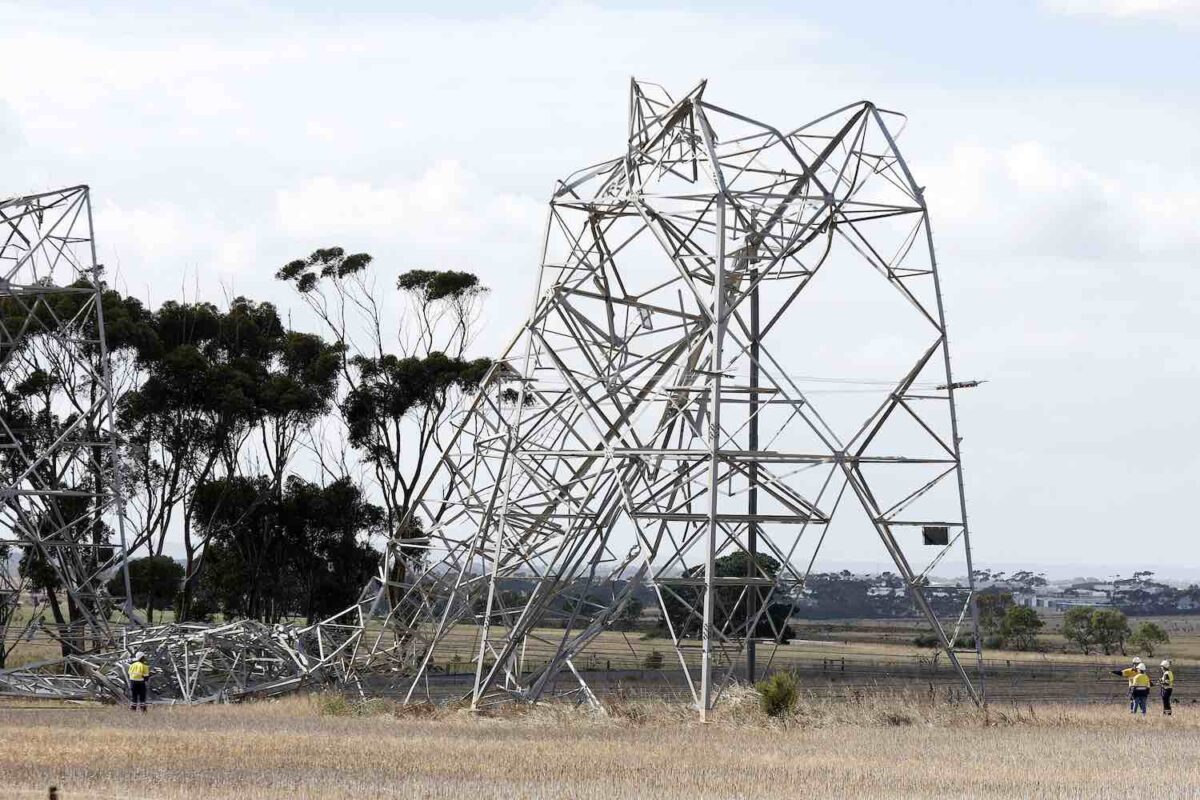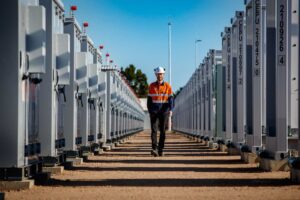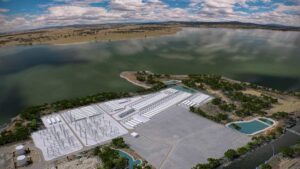It will likely take some time to find out exactly what happened in the moments after an intense storm tore down at least six transmission towers and a major transmission line west of Melbourne on Tuesday afternoon. But one thing is for sure – it was not the fault of “woke” renewables.
Victoria suffered one of its worst blackouts on record, and one of the biggest in the country since the state-wide outage in South Australia in 2016. That event, involving the collapse of three transmission lines, was blamed on renewables even before they had become “woke” in the eyes of the conservative ideologues.
The Victoria event, however, underlines the vulnerability of an energy system that depends on ageing centralised generators in a period of ever intensifying weather events.
What we do know is that storms tore down at least six transmission towers on one of the main 500 kV transmission lines, triggering a massive frequency excursion that took out 1,000 MW of load and 2,700 MW of generation, including the biggest in the state, the Loy Yang A brown coal generator owned by AGL Energy.
The Australian Energy Market Operator ordered 300 MW of load to be shed – affecting around 90,000 customers – as it worked to stabilise the grid in the late afternoon.
Those forced outages did not stop there – more than 530,000 customers lost power as fierce winds tore down trees and power lines in local grids across the state. Hundreds of powerlines were blown down. It may take weeks for some customers to get power again.
The response from mainstream media and the federal Coalition was almost Pavlovian. The Australian Finance Review turned to the nearest business lobbyist to fret about the pace of the transition to green energy.
Those thoughts were echoed by the Coalition, including its energy spokesman and nuclear fantasist Ted O’Brien. Sky after Dark and their audience fretted about the impact of “woke” energy systems and policies.
You’d think, if they really cared about reliability and security, they would be pushing for the transition to go faster. As Monash University energy experts Roger Dagarville and Behrooz Bahrani point out, climate change is going to make these events more frequent, and more intense.
“Distributed renewable energy systems offer both more vulnerability due to more infrastructure spread over wider areas, but also additional resilience as losses of individual power lines don’t have the same impact of losing large centralised power stations,” Bahrani says,
“As a result of climate change we are bound to have more wild weather conditions in the future and our energy systems must learn to adapt and grapple with such situations more often.
“Additional system security measures such as redundancy i.e., extra energy generation beyond just what is forecast to be required, and fast response storage technologies will help make the system more robust.”
Dargaville, as did others, said it was notable that the Victorian grid did not completely fail. “(That) is a testament to the resilience in the system and the safety mechanisms in place to protect vital infrastructure,” he said.
It will be interesting to see the role that the ever growing fleet of battery storage played in the response to the disruption. Hydro and gas delivered the extra gigawatts to replace the lost capacity from Loy Yang A, but it is likely the big batteries responded the quickest, giving the network and market operators time to breathe.
One of the big questions in energy circles was why Loy Yang A tripped, and the neighbouring Loy Yang B – owned by Alinta Energy – did not. The answer to that question may not be known for a while.
LYA owner AGL says investigations are continuing. “Due to transmission lines being damaged by significant storm activity, all four units at the Loy Yang A power station in Victoria were tripped and offline yesterday for a period,” it said in a brief statement.
“Two units have returned to service. It is currently expected that the remaining units will be progressively and safely returned to service over the next 24 hours.”
The happiest people will be the owners of the generators that enjoyed nearly two hours of prices at the market cap of $16,600/MWh. And happy too will be the customers of household batteries, and EVs with vehicle-to-load, that would have provided back-up power in those suburbs and regions blacked out by the storms.
The challenge for the operators, regulators and policy makers is to make sure all those points of resilience can be marshalled at scale to deal with the weather events that await us. And to manage the poor sods screaming FUD and woke in the moonlight.
Coalition Senator Matt Canavan, having railed against the “net zero agenda” and the lack of 24/7 power (here’s looking at you Loy Yang A, although that’s probably not what he meant) achieved peak combustion when he wondered aloud on Twitter: “How are all those EVs going to charge when we get more of these renewable blackouts?”.
Probably better than those trying to fill their petrol cars at blacked out service stations. And many of those EV owners can also plug their household appliances into their car batteries, keep the fridge running and the lights on. Try doing that with your Camry.








